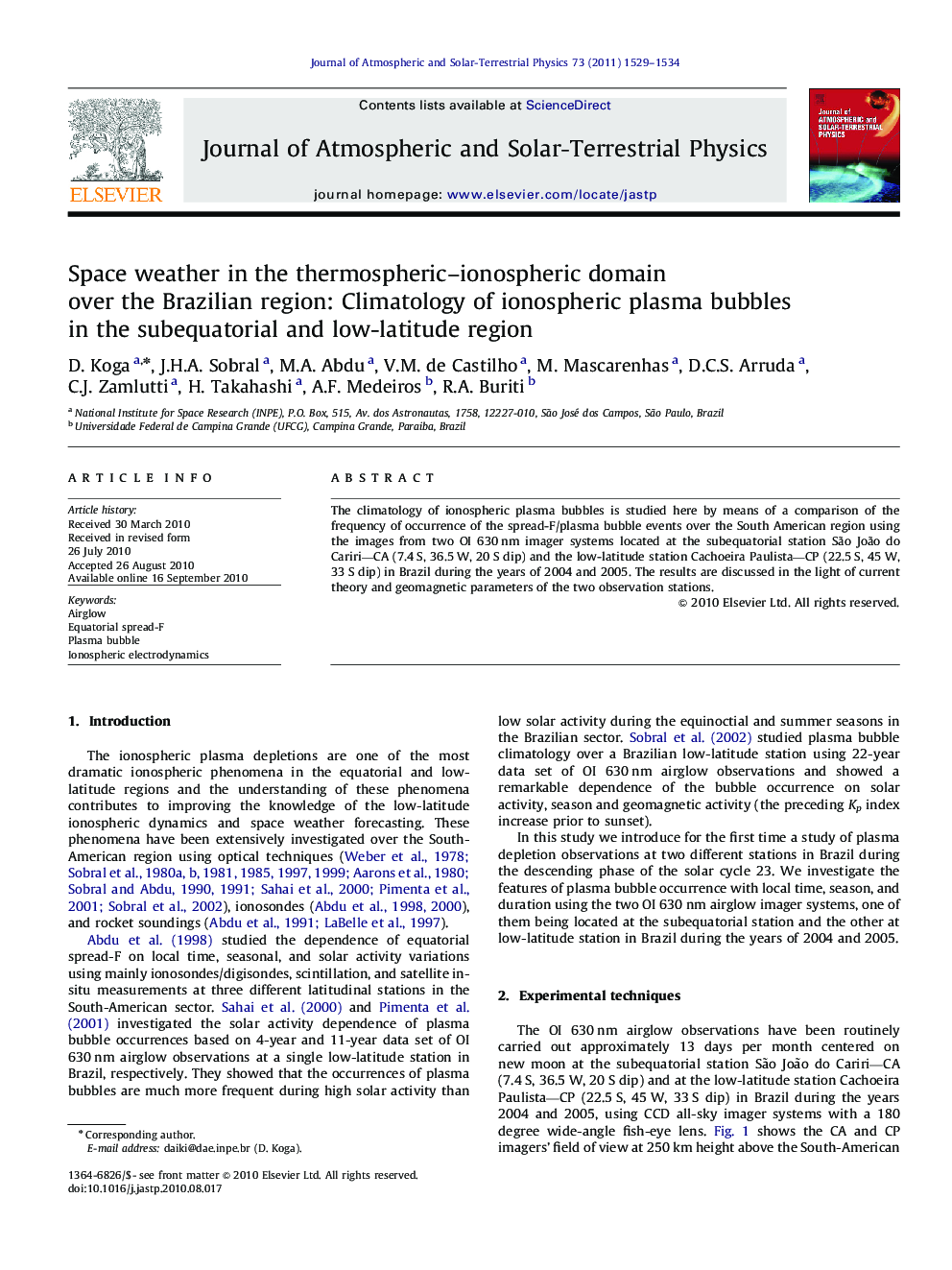| Article ID | Journal | Published Year | Pages | File Type |
|---|---|---|---|---|
| 1777276 | Journal of Atmospheric and Solar-Terrestrial Physics | 2011 | 6 Pages |
The climatology of ionospheric plasma bubbles is studied here by means of a comparison of the frequency of occurrence of the spread-F/plasma bubble events over the South American region using the images from two OI 630 nm imager systems located at the subequatorial station São João do Cariri—CA (7.4 S, 36.5 W, 20 S dip) and the low-latitude station Cachoeira Paulista—CP (22.5 S, 45 W, 33 S dip) in Brazil during the years of 2004 and 2005. The results are discussed in the light of current theory and geomagnetic parameters of the two observation stations.
Research highlights►The first study of plasma depletion observations at two different stations in Brazil. ►The frequency of plasma bubble occurrence at a subequatorial station is larger under quiet conditions than disturbed conditions. ►The plasma bubbles generation has a contribution of the disturbance dynamo electric field. ►Under both disturbed and quiet conditions, there is no significant difference of maximum plasma bubble lifetime.
